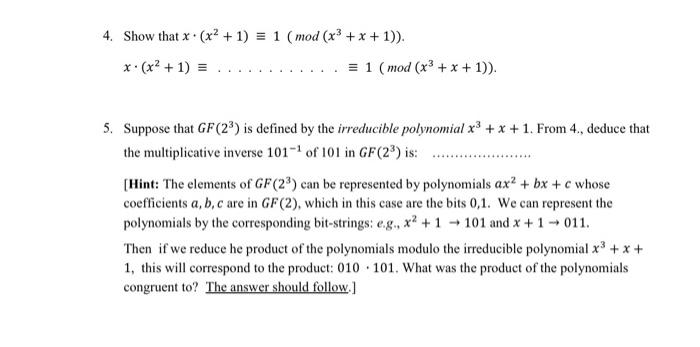Answered step by step
Verified Expert Solution
Question
1 Approved Answer
4. Show that x(x2+1)1(mod(x3+x+1)). x(x2+1).1(mod(x3+x+1)). 5. Suppose that GF(23) is defined by the irreducible polynomial x3+x+1. From 4., deduce that the multiplicative inverse 1011 of

Step by Step Solution
There are 3 Steps involved in it
Step: 1

Get Instant Access to Expert-Tailored Solutions
See step-by-step solutions with expert insights and AI powered tools for academic success
Step: 2

Step: 3

Ace Your Homework with AI
Get the answers you need in no time with our AI-driven, step-by-step assistance
Get Started


